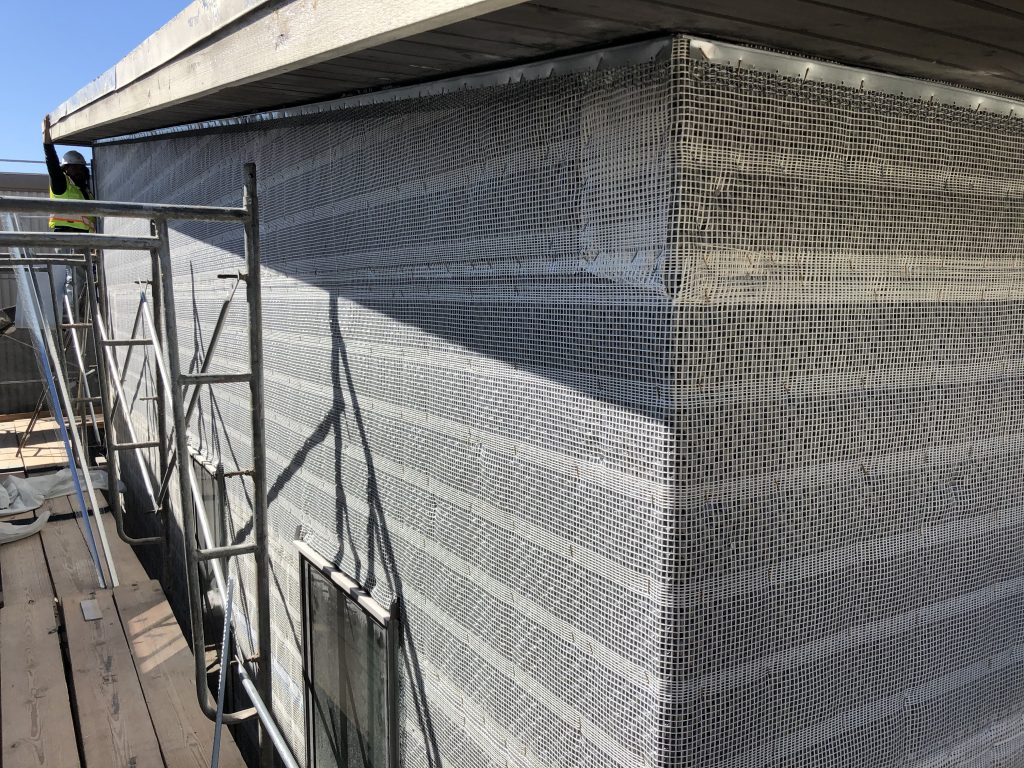Standardizing Rainscreens
One of the most reliable ways of keeping walls dry and allowing them to dry out if they do get wet, is to construct the wall with an outer shell – also known as a rainscreen.
A rainscreen is defined as an assembly applied to an exterior wall which consists of, at minimum, an out later, and inner layer, and a cavity between them sufficient for the passive removal of liquid and water vapor. Although the term emerged in the 1960s, earlier examples of rainscreens date back to the 19th century. They are effective at managing moisture and provide exceptional opportunities for energy-efficient performance through continuous insulation and reducing thermal bridging. According to Green Built Alliance, they are one of the best ways to increase durability and prevent water damage to our homes and buildings.
Rainscreen walls have had a few different definitions over the years. In the past, it was a general term referring to a facade material. The term now typically defines the entire system designed with products and details that assist in creating pressure-equalized and ventilated systems. Ultimately, a rainscreen wall is a protective barrier. Its components are engineered to function as a complete system: the rainscreen material, the type of channel and clip arrangement used to fasten the rainscreen veneer, the dimension of the air gap, and the air barrier and flashings.
Building researchers and scientists through the 1960s and 1970s tested and validated open rainscreen systems as well as simple, vented, and drained systems. The American Architectural Manufacturers Association (AAMA) published the first guide for pressure-equalizing designs in 1971. Today, while research and testing on rainscreens continues, there is a growing initiative to standardize rainscreen specifications and criteria.
At Dörken, we are passionate about supporting performance-driven rainscreen assemblies that contribute to more durable, airtight, and resilient buildings, which is why we joined a diverse community of industry professionals who are working hard to optimize rainscreen performance expectations. The Rainscreen Association in North America (RAiNA), founded in 2020, is a vital step forward in the design and construction industry; it is the leading authority on rainscreen design and construction.

With airtightness and insulation building codes becoming more prominent across North America, it’s more important than ever to include these practices – particularly in coastal areas with high precipitation. However, whether or not the code requires a rainscreen, it is a better way to detail the exterior cladding of buildings. After all, moisture problems correlating back to incorrect cladding installation details have been discovered even in dry climates.
Through RAiNA, architects, design professionals, building owners, contractors, and manufacturers work hand in hand to develop key technical and marketing data, promote education and training, and develop standards to guide and govern rainscreens. We are proud to have our very own Marcus Jablonka, VP of Operations and Marketing, serve on the Executive Committee and Board of Directors to promote the vital use of rainscreen assemblies in North America.
These systems offer exciting solutions and opportunities to architects and contractors who are interested not only in solving moisture penetration but in all areas of wall performance. To learn more about the important industry work RAiNA is undertaking, visit www.rainscreenassociation.org/


